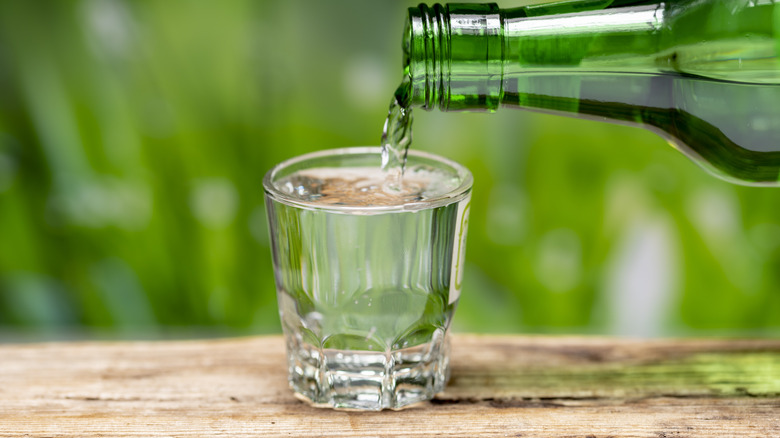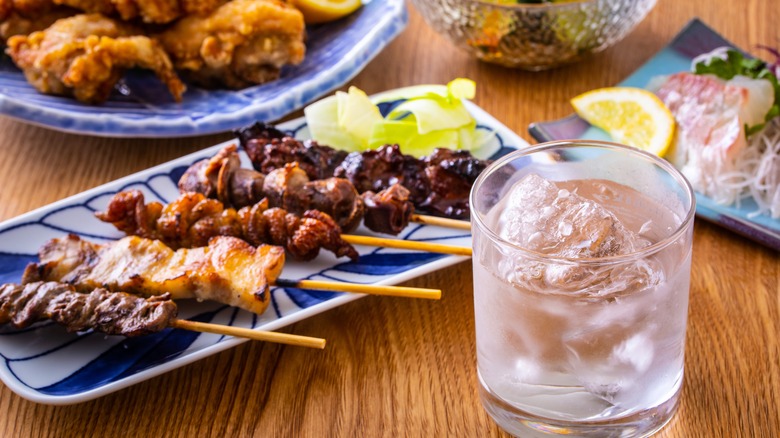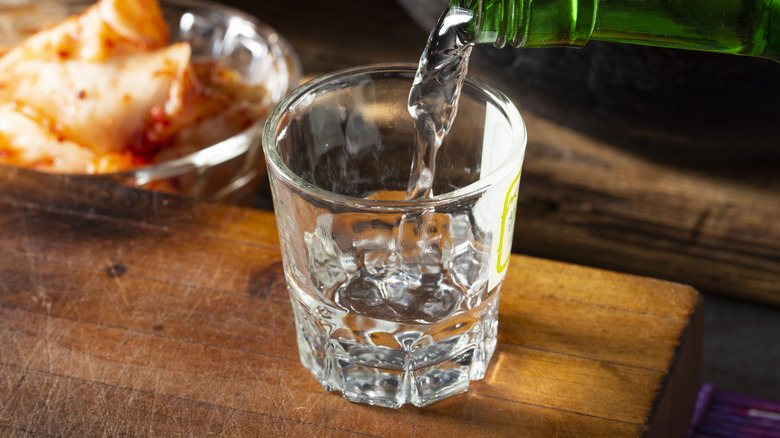What's The Difference Between Soju And Shochu?
Wherever you go in the world, you'll find someone distilling a unique regional or local spirit. Liquor distillation could date back to around 2000 BC, and appropriately, we're not sure where it even started (theories are Mesopotamia, Egypt, or China). Now, though, we've got way more options, and one that's gaining popularity around the globe is Japanese shochu (which is very different from sake and other Japanese alcohols). Or, wait, is it "soju?" Are the two even different?
Don't get it twisted; soju and shochu are completely different drinks. Conceptually, the two are similar in that they look pretty much the same; they're both powerful spirits, and they're both rising in global popularity. That naming isn't a coincidence either; they come from neighboring countries — Korea and Japan — whose languages share plenty of overlap. Dig a little deeper, though, and you'll notice some significant differences between soju and shochu, from how they're made to how they're regulated, how they're supposed to be served, and how they taste.
The biggest difference between soju and shochu is in how they're distilled
Despite shochu being arguably better known in the United States, soju actually predates it, dating from the 13th century in Korea. One specific brand of soju, Jinro, is in fact the best-selling liquor in the world. Shochu, meanwhile, is nearly as old, with origins in the 1400s. It's heavily associated with Kyushu, Japan's southernmost and warmest island — it was created as a way to preserve brewed beverages in hotter climes.
Both can make use of the same or similar base ingredients. Shochu can be made from a variety of vegetables and grains, such as rice, barley, or sweet potato. Soju is traditionally made from rice, but it doesn't have to be — it can use any of the same bases shochu does (or even more, such as wheat or tapioca). The result in either case is typically a clear, strong liquor with an ABV in the same general range (20 to 34 percent in the case of soju, 25 to 30 percent for shochu).
But it's in how they're made that you start to see significant differences between the two. While both can be either single or continuously distilled, shochu has a distinct distillation method that is unlike any other spirit, in which its base is subjected to a sugar-producing process called saccharification until it produces koji mold, a product also used in sake production. The mash and koji combination is then distilled to produce shochu.
Soju and shochu have different rules surrounding them
Both soju and shochu each have their own rules and strictures related to how they're bottled and presented. Both can be served in cocktails, although soju is traditionally drunk straight up. Shochu is well-regulated by the Japanese government into two legal classifications depending on its distillation method and cannot exceed 45 percent ABV. Allowable sweeteners and additive ingredients are likewise strictly defined. Soju, meanwhile, can have all sorts of flavors added to it, giving it a much larger range of potential tastes than shochu when drunk neat.
Soju's rules, meanwhile, revolve much more closely around how you're supposed to drink it, as there's a proper way to drink soju, and Korean culture takes it very seriously. As soju is meant to be shared, you're never supposed to pour your own; someone else should do it for you, and you should return the favor. Glasses are supposed to be held while they're refilled, either in both hands or in your right while supporting it with your left. It's also often served with a glass of beer (a key reason a somaek, a mix of beer and soju, is South Korea's most popular cocktail). By contrast, you can drink shochu any way you feel like. It can be served chilled, over ice, warm — there's no wrong answer, nor any complex rituals involved in drinking it.


